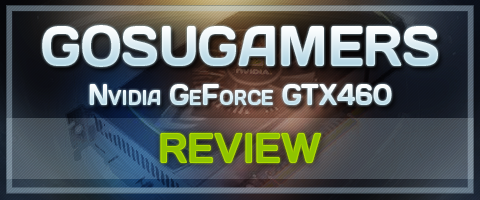
We put Nvidia's GeForce GTX 460 to the test, and the card is forged for StarCraft 2, bringing on an average of 110 frames per second with a 1900x1200 resolution, and with all the settings set to Ultra.

Nvidia graphic cards offers anti aliasing to StarCraft 2 through the Nvidia Control Panel since there is no integrated anti aliasing in StarCraft 2. I have tested the GeForce GTX460 with no anti aliasing, 2x anti aliasing, 4x anti aliasing and 8x anti aliasing, and I can conclude that the game runs perfectly smooth with all of them, on Ultra settings and a resolution of 1900x1200. We recently announced a contest where you can win a GTX 460, so if you are planning on participating, you will know what you're competing for.

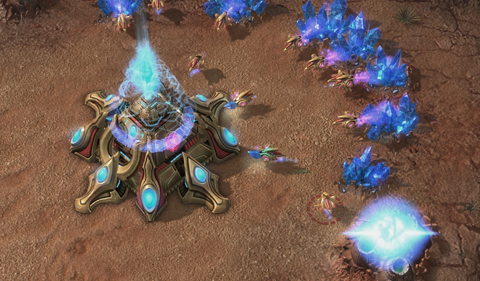
A plain one on one at Blistering Sands gave me an average of 110 frames per second.
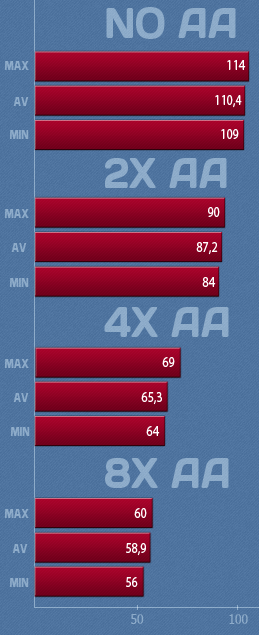 Anti-aliasing:
Anti-aliasing:Nvidia added an anti-aliasing function through the graphics card's control panel where you can choose the amount you'd like. I tested 2x, 4x and 8x. StarCraft 2 does not include anti-aliasing, so this is a definite bonus when it comes to Nvidia cards, which had this function for quite some time now.
Results:
As you can see in the benchmarks to the right, a normal one vs one on Blistering Sands without any anti-aliasing gave me an average of 110 frames per second viewing the players camera of the protoss player in the replay. Anything lower than 30 frames a second will give you some lag in the game, but so far we're still way above the safe zone.
Using a 2x anti-aliasing also gave me great results, an 87 frames per second average. Pushing it up to a 4x anti-aliasing gave me a 65 frames per second average, and the 8x a 58, almost 59 average. All of these numbers proves that the card is capable of running StarCraft 2 with no problems, even with the anti-aliasing set to 8x, which of course gives the visuals a great smooth overall look.
Hardware:
The benchmarks were done using an Intel Core i7 920 CPU, 6GB (1666mhz) of RAM, a P6T Deluxe v2 motherboard, and the GTX 460.
Performance in gameplay:
I noticed that the frames per second were a little lower for a zerg player than a protoss or a terran, around a 5 frames per seconds lower average. I also noticed sudden frame drops, anything from 5 to 15 when a zerg building completed, or a unit exploded, but it never got lower than 50 frames per second for the 8x anti aliasing, and then of course making it no problems playing on a lower, or no anti-aliasing settings either.

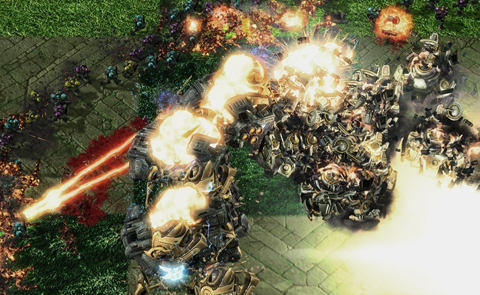
Pushing it to the limit in a game of income wars.
I thought I'd put some pressure on the card, playing a couple of long Income Wars, one of the most popular custom maps on the European server. For those of you who don't know the map, well let's say it has a lot of units fighting involved, and as you can see in the video and the picture below, hundreds of battle cruisers and void rays fighting brought down the frames per second to 18 at the lowest. This is nothing to worry about in normal multiplayer games, as these massive numbers of units does not exist in non-custom made maps.
I did the same experiment with a GTX 295, and the results were the same, but that's also a graphics card without Direct X 11, and it costs approximately double of what the GTX 460 does.
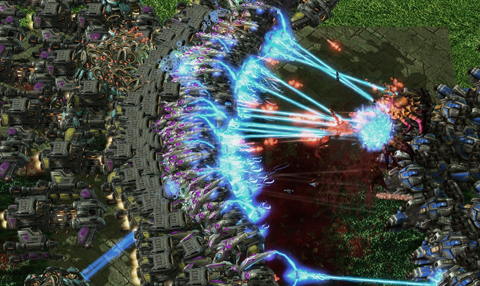
Reaching the limit, got it down to 18 frames per second.


I have a GTX 295, which I actually paid more than €400 for, the GTX 460 is DX11 compatible, half the price and runs StarCraft 2 just as smooth as the 295, if not smoother.
I've finished the campaign, and had my decent amount of multiplayer games on the ladder, and I'm very satisfied with how the card performs. It is though, what I expect of a card that costs around €200, even there are much more expensive cards out there. But for a mid-high class card, this card has no problems running StarCraft 2 as good as it gets, everything on the highest settings, and a resolution of 1900x1200. If you're aiming for a card around the €200 price, play StarCraft 2, a GTX 460 is a definite good choice.
Heating is not a problem, but the card does make a lot of noise.
I also do a lot of video editing on my sparetime, which means I also need a decent graphics card for that, especially when I edit high definition content, such as the recordings from in-game material of StarCraft 2, or working with heavy chroma key effects in After Effects. This card has not disappointed me yet, but if you're building a computer mainly for videoediting there are plenty of good alternatives out there, as this one is made for StarCraft 2.


